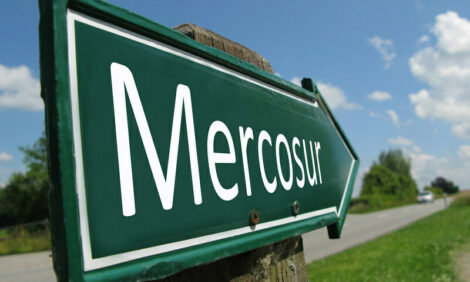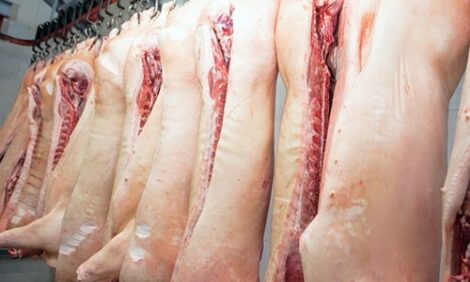



Assessment of pain induced by castration in piglets
FRANCE - Evidence exists that castration induces acute pain in piglets. However, little was known about the persistence of pain after the first few hours following castration, until this report published by ScienceDirect.com.
|
The purpose of this experiment was to assess whether behavioral and/or physiological signs indicative of pain persist over the 5 days following castration of piglets. Five-day-old piglets were either castrated, sham-castrated, or left undisturbed in their pen.
Treatments were applied within litters. Two methods were used for behavioral observations: scan sampling using a detailed ethogram during the daytime and continuous observations during the night. Physiological responses were monitored through the measurement of corticosteroids and catecholamines in spontaneously voided urine.
Behavioral observations performed over the 5 days following castration revealed that castrates (C) displayed reduced activity at the udder (massage + suckling) and remained more inactive while awake (P<0.001) during the first 2.5 h following castration compared to their non-castrated (NC) littermates.
C piglets tended to walk more throughout the experiment (P<0.05). They showed significantly more pain/castration related behaviors during the first hours following treatment (prostration, stiffness, and trembling), for at least 2 days (scratching the rump and tail wagging) or throughout the experiment (huddling up).
Concerning tail wagging, the difference between the two groups tended to be still significant 4 days after castration. Scratching the rump reached a peak 24 h after castration but was still present on the fourth night following castration. C piglets displayed a reduced social cohesion: they were more frequently in isolation during the first 2.5 h following castration (P<0.001) and were more often desynchronized the afternoon following castration (P=0.07) and 24 h later (P<0.05).
There was no clear effect of castration on urinary corticosteroids and catecholamines. Growth performance did not differ between the two groups. Overall, these results confirm that castration induces pain and that behavioral responses are exacerbated during the first few hours following castration.
However, many behavioral alterations persist beyond 24 h and some of them are still present 4 days after castration. This suggests that piglets suffer from pain for more than a few hours following castration and emphasizes the necessity to develop analgesic protocols or alternative methods to castration.

Source: Science Direct - 15th July 2003













